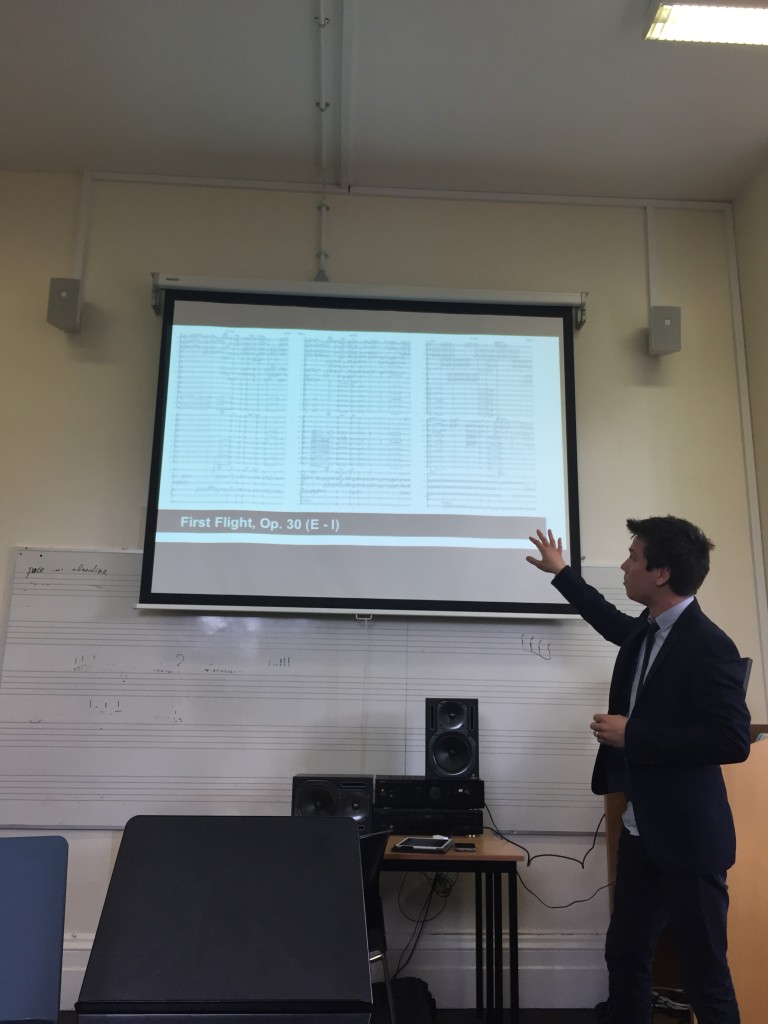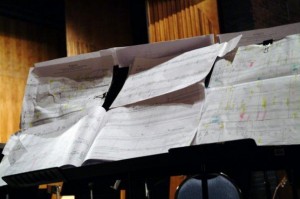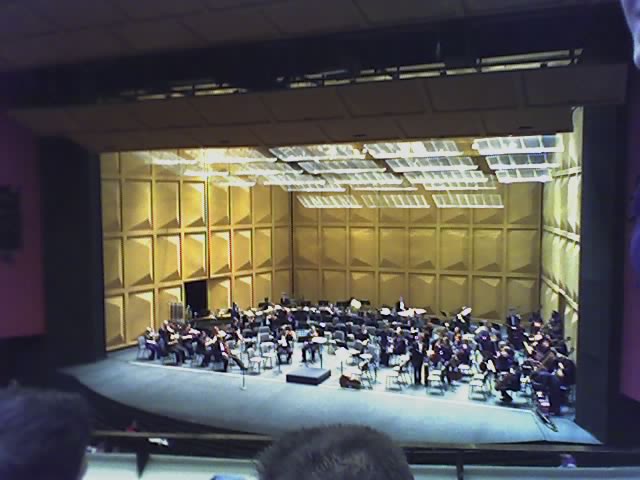While I was in Ireland a week ago, I had the honor of speaking to composition students at the Dublin Institute of Technology Conservatory of Music & Theatre. It was a great chance to spend two hours talking about myself…
“It’s kind of odd making a powerpoint presentation about yourself,” I opened to absolutely no laughs or even smiles.
I guess starting off with a joke didn’t work afterall. It really was an honor though. It was fun to tell my story and how I approach composing. I’m always interested in how others work and (perhaps selfishly) I enjoyed discussing the music that I’ve been so lucky to write.
I presented a number of different pieces, including my masters thesis, First Flight. At approximately 13 minutes in length, First Flight was my first successful wind ensemble work. And at 13 minutes in length, it was 47 minutes shorter than the theses written by everyone sitting in front of me. “We have a requirement of at least one hour of music.”
One hour of music. That’s four times the size of my thesis. So that should mean 60 minutes of intelligent, artistic and quality music, right? This lead me to the question, does size really matter?
Ok, well if you know me you know I love Mahler. He’s the king of long-winded composition. Even when I speak of my love for Mahler, I think of specific moments I love. In the monumental 3rd symphony (being honest here), I love the final movement. That’s 30 minutes, not an hour, I could care less about the “bing, bong” part. I love all of the 10th Symphony, but technically the Adagio was the only movement finished. Ok ok ok, I love the 9th Symphony. The opening is so lush and by the time you get to the end it’s just so magical…by the time you get to the end.
Ok, let’s put Mahler to the side for a moment. What music do I love that takes at least 60 minutes to get through? Planets? Wagner? Symphonies? Daphnis & Chloe? No, I love the moments more: Jupiter, finale of Sibelius’ Symphony No. 5 and obviously Lever le jour, obviously. I would say an opera or musical doesn’t count in this instance because there are so many small sections that make up the whole.
Now some of you will say, “Well Tim, it takes going through the full hour long piece to recognize the importance of the moments.” Yes, you’re right. I think, or are you?
Let’s avoid discussion of how we’re “all ADHD” and can’t focus for an hour of music. My question is should we?
Remember that the requirement is for the composition to be at least 60 minutes in length. Can a composer write a concise and fully intelligent piece in 60 minutes? Yes, we have seen it in the past, (there are many great long works) but can the composer do it without meandering all over the place? Do composers need to be boasting about how big their composition is, or should we celebrate the ones with less girth that get the job done?



